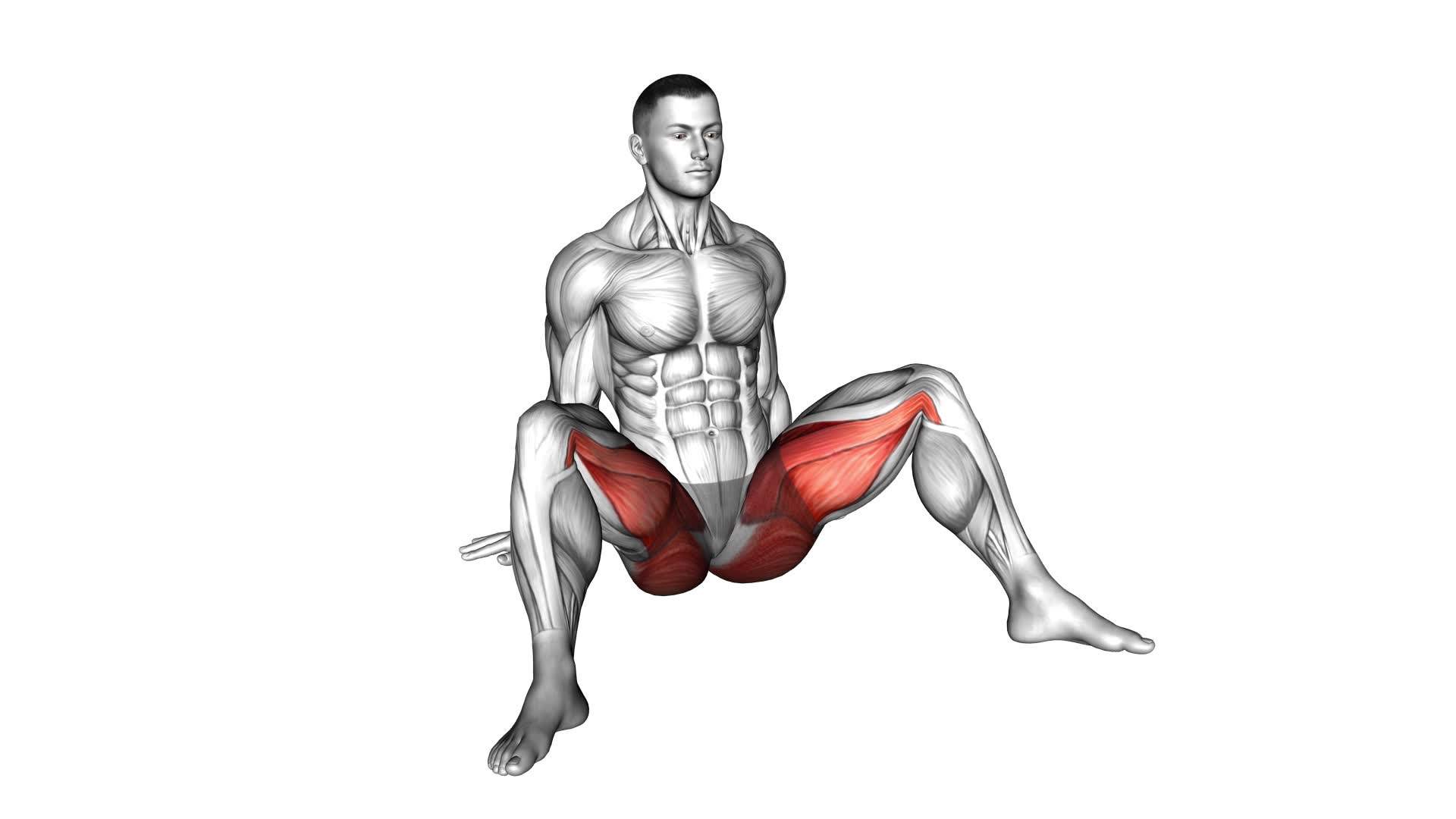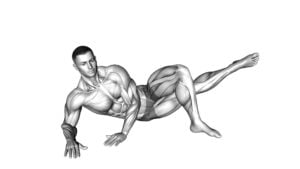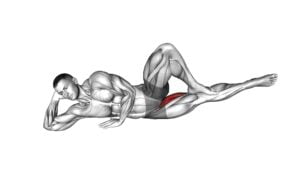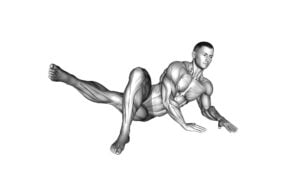Seated Alternate Wide Side Adduction (male) – Video Exercise Guide & Tips

Looking to strengthen your side muscles? Check out this video exercise guide for Seated Alternate Wide Side Adduction, specifically designed for males.
Watch This Exercise Video
Learn the proper form and technique, set up your equipment correctly, and avoid common mistakes.
Discover variations and progressions to challenge yourself and maximize your results.
Get ready to target those side muscles and level up your fitness routine with this informative and precise exercise guide. Let's get started!
Key Takeaways
- Improved stability and strength in hips and core
- Targets hip adductor muscles
- Engages core and stability muscles in standing position
- Enhances overall strength and stability
Benefits of Seated Alternate Wide Side Adduction
You can experience improved stability and strength in your hips and core with the seated alternate wide side adduction exercise. This exercise specifically targets the hip adductor muscles, which are responsible for bringing your legs together. By engaging these muscles, you can enhance muscle activation and increase strength gains in your lower body.
The seated alternate wide side adduction exercise is a great way to isolate and strengthen your hip adductors. As you sit on a chair or bench, you'll place a resistance band around your thighs, just above your knees. From there, you'll slowly and controlledly bring one leg out to the side, keeping tension on the band. Then, you'll return to the starting position and repeat with the other leg.
By performing this exercise regularly, you can improve muscle activation in your hip adductors, leading to increased strength gains. Strong hip adductors are important for stability and balance, especially during activities that require lateral movements or changes in direction.
Incorporating the seated alternate wide side adduction exercise into your workout routine can help you achieve a stronger and more stable core and hips. It's an effective exercise for targeting and strengthening the hip adductor muscles, resulting in improved muscle activation and increased strength gains.
Proper Form and Technique
Achieving proper form and technique is crucial for maximizing the benefits of the seated alternate wide side adduction exercise. To ensure you're performing the exercise correctly, here are some key tips:
- Sit upright on the machine with your back firmly against the backrest. Maintain a neutral spine throughout the exercise to avoid straining your back.
- Place your feet flat on the footrest, shoulder-width apart. This will provide a stable base of support and help maintain proper alignment.
- Grip the handles with a firm but comfortable grip. Keep your elbows slightly bent and your shoulders relaxed.
- Engage your core muscles and exhale as you slowly bring one leg out to the side, keeping it straight. Avoid jerking or swinging the leg to prevent injury.
Common errors to watch out for include:
- Hunching or rounding your back, which can strain your spine.
- Allowing your feet to lift off the footrest, compromising stability.
- Using momentum instead of controlled movements, reducing the effectiveness of the exercise.
- Failing to breathe properly, which can lead to tension and decreased performance.
Equipment and Set-Up
To properly set up for the seated alternate wide side adduction exercise, ensure that the equipment is adjusted to your height and comfort level. This seated exercise requires a specific type of equipment called a wide side adduction machine. Before starting, make sure the seat height is adjusted so that your feet can comfortably rest on the footrests. Adjust the footrests so that they're in line with your ankles.
Sit with your back against the backrest, ensuring that your spine is in a neutral position. Your knees should be slightly bent, and your thighs should be parallel to the floor. Place your hands on the handles provided on both sides of the machine. These handles will help you maintain stability during the exercise. Make sure you have a firm grip on the handles.
Now that you have set up the equipment properly, you're ready to perform the seated alternate wide side adduction exercise. But before you start, it's important to know the common mistakes to avoid.
Common Mistakes to Avoid
To ensure a safe and effective workout, it's important to be mindful of common mistakes that can occur during the seated alternate wide side adduction exercise. Incorrect form can lead to potential dangers such as strain or injury.
Additionally, neglecting to warm up properly can increase the risk of muscle pulls or strains.
Lastly, overexertion should be avoided to prevent fatigue and potential overuse injuries.
Incorrect Form Dangers
Avoid the common mistake of using excessive weight during the Seated Alternate Wide Side Adduction exercise, as it can lead to incorrect form and potential injury. Maintaining proper technique is crucial to prevent potential injuries and get the maximum benefit from this exercise.
Here are some dangers to watch out for:
- Compromised range of motion: Using too much weight can limit your ability to perform the exercise with a full range of motion, reducing its effectiveness and increasing the risk of strain or muscle imbalances.
- Poor posture: Excessive weight can cause you to lean forward or hunch your shoulders, putting unnecessary stress on your lower back and shoulders.
- Muscle imbalances: When using excessive weight, you may rely on stronger muscles to compensate for weaker ones, leading to imbalances and potentially causing injuries.
- Joint stress: Incorrect form due to excessive weight can put excessive stress on your joints, including your hips and knees, leading to pain or injury.
By avoiding excessive weight, you can minimize the risk of these potential injuries and ensure that you're performing the exercise correctly.
Now, let's move on to the next section and discuss the importance of a proper warm-up.
Lack of Warm-Up
Make sure you warm up properly before performing the Seated Alternate Wide Side Adduction exercise to avoid potential injuries and maximize your workout.
Preventing injuries is crucial in any exercise routine, and warming up plays a significant role in injury prevention. When you warm up, you increase blood flow to your muscles, which helps to loosen them up and improve their flexibility.
Stretching is an essential component of a warm-up routine as it helps to lengthen and prepare your muscles for the upcoming workout. By incorporating stretching exercises into your warm-up, you reduce the risk of muscle strains, pulls, and other injuries.
Overexertion Risks
To prevent overexertion and common mistakes while performing the Seated Alternate Wide Side Adduction exercise, it's important that you maintain proper form and listen to your body's limits.
Overexertion can lead to overuse injuries and muscle strain, so it's crucial to be mindful of your body's signals. Here are some tips to help you avoid these risks:
- Start with a light warm-up to prepare your muscles for the exercise.
- Use controlled movements and avoid jerking or swinging your legs.
- Focus on engaging the targeted muscles and avoid relying on momentum.
- Gradually increase the resistance and intensity of the exercise over time, but never push yourself beyond your limits.
By following these guidelines, you can reduce the risk of overexertion and ensure a safe and effective workout.
Remember to always prioritize your body's well-being and adjust the exercise as needed to avoid overuse injuries and muscle strain.
Variations and Progressions
Try different variations and progressions of the Seated Alternate Wide Side Adduction exercise to challenge your muscles and continue to make progress.
There are advanced variations and muscle activation techniques that can take your workout to the next level.
One option is to increase the resistance by using a heavier weight or resistance band. This will require your muscles to work harder and build strength.
Another variation is to perform the exercise in a standing position instead of sitting. This will engage your core and stability muscles as you balance and control the movement.
Additionally, you can try incorporating unilateral movements, where you focus on one side of the body at a time. This can help correct any imbalances and improve overall muscle symmetry.
To further challenge yourself, you can slow down the tempo of the exercise, emphasizing the eccentric phase where the muscle lengthens. This will increase time under tension and enhance muscle growth.
Remember to always maintain proper form and technique, and consult with a fitness professional if you're unsure about performing advanced variations or muscle activation techniques.
Tips for Maximizing Results
To maximize your results, focus on maintaining proper form and technique throughout the Seated Alternate Wide Side Adduction exercise. This will ensure that you're targeting the intended muscles effectively and minimizing the risk of injury. Here are some tips to help you maximize the effectiveness of this exercise:
- Engage your core: By keeping your core muscles actively engaged throughout the exercise, you won't only stabilize your body but also increase the intensity of the workout.
- Control your movements: Avoid using momentum or swinging your legs during the exercise. Instead, focus on slow and controlled movements, squeezing your inner thighs as you bring your legs together.
- Breathe correctly: Inhale during the eccentric phase (when you bring your legs apart) and exhale during the concentric phase (when you bring your legs together). This will help you maintain proper breathing patterns and optimize your performance.
- Gradually increase resistance: As you become more comfortable with the exercise, gradually increase the resistance by using heavier weights or resistance bands. This will challenge your muscles and promote further strength and growth.
Frequently Asked Questions
How Many Calories Can I Burn by Performing Seated Alternate Wide Side Adduction?
Performing seated alternate wide side adduction can help you burn calories and activate your muscles. The exact number of calories burned depends on factors such as your weight, intensity level, and duration of the exercise.
This exercise targets your inner thigh muscles and can be an effective addition to your fitness routine. Remember to consult with a professional to determine the best approach for your specific goals and abilities.
Can Seated Alternate Wide Side Adduction Help in Reducing Belly Fat?
Seated alternate wide side adduction is a great exercise to target your oblique muscles and strengthen your core. It's effective in toning your muscles. However, it may not directly reduce belly fat on its own.
When combined with a balanced diet and overall fitness routine, including other belly fat exercises, it can contribute to overall fat loss and help you achieve a leaner midsection.
Incorporating seated alternate wide side adduction in your full body workout routine offers numerous benefits for your overall strength and stability.
Is This Exercise Suitable for Individuals With Lower Back Pain?
Seated alternate wide side adduction is a beneficial exercise for individuals with lower back pain. This exercise specifically targets the muscles in the sides of your body, helping to strengthen and stabilize your core.
By engaging in seated exercises, you can alleviate stress on your lower back while still reaping the benefits of a challenging workout.
Incorporating lower back exercises into your routine can help improve posture, reduce pain, and enhance overall strength and flexibility.
Can Seated Alternate Wide Side Adduction Help in Improving Posture?
Seated alternate wide side adduction is a great exercise for improving posture. By incorporating this exercise into your routine, you can strengthen your obliques, which play a crucial role in maintaining proper alignment and balance.
This exercise targets the muscles in your sides, helping to improve overall posture and stability. Adding seated alternate wide side adduction to your workout can be an effective way to enhance your posture and achieve better balance.
How Many Times a Week Should I Perform Seated Alternate Wide Side Adduction for Optimal Results?
To achieve optimal results, it's important to consider the frequency of your seated alternate wide side adduction exercise. Performing this exercise two to three times a week is recommended.
By incorporating this frequency into your routine, you can maximize the benefits of seated alternate wide side adduction. This exercise helps strengthen your side muscles, improve stability, and enhance overall posture.
Consistency is key, so make sure to stick to your weekly sessions for best results.
Conclusion
In conclusion, seated alternate wide side adduction is a beneficial exercise that targets the muscles in the hips and thighs.
By maintaining proper form and technique, using the appropriate equipment and set-up, and avoiding common mistakes, individuals can maximize their results from this exercise.
Additionally, variations and progressions can be incorporated to challenge and further strengthen these muscles.
Remember to follow these tips to ensure a safe and effective workout.

Author
Years ago, the spark of my life’s passion ignited in my mind the moment I stepped into the local gym for the first time. The inaugural bead of perspiration, the initial endeavor, the very first surge of endorphins, and a sense of pride that washed over me post-workout marked the beginning of my deep-seated interest in strength sports, fitness, and sports nutrition. This very curiosity blossomed rapidly into a profound fascination, propelling me to earn a Master’s degree in Physical Education from the Academy of Physical Education in Krakow, followed by a Sports Manager diploma from the Jagiellonian University. My journey of growth led me to gain more specialized qualifications, such as being a certified personal trainer with a focus on sports dietetics, a lifeguard, and an instructor for wellness and corrective gymnastics. Theoretical knowledge paired seamlessly with practical experience, reinforcing my belief that the transformation of individuals under my guidance was also a reflection of my personal growth. This belief holds true even today. Each day, I strive to push the boundaries and explore new realms. These realms gently elevate me to greater heights. The unique combination of passion for my field and the continuous quest for growth fuels my drive to break new ground.







